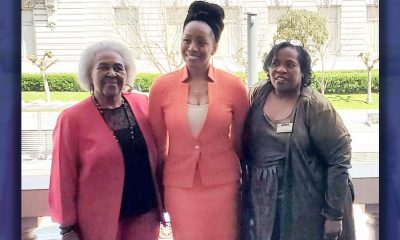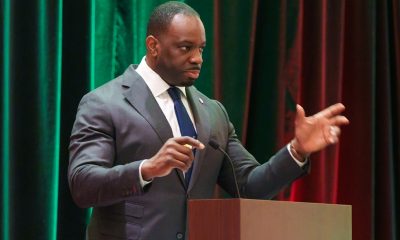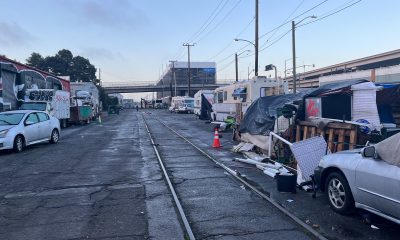Coronavirus
New State Vaccine Push Focuses on K-12 Education Workers
“Our top priority is getting students back in the classroom as safely and quickly as possible, and the expanded access to vaccines will build on the momentum and confidence that we can do so with urgency,” Newsom said.
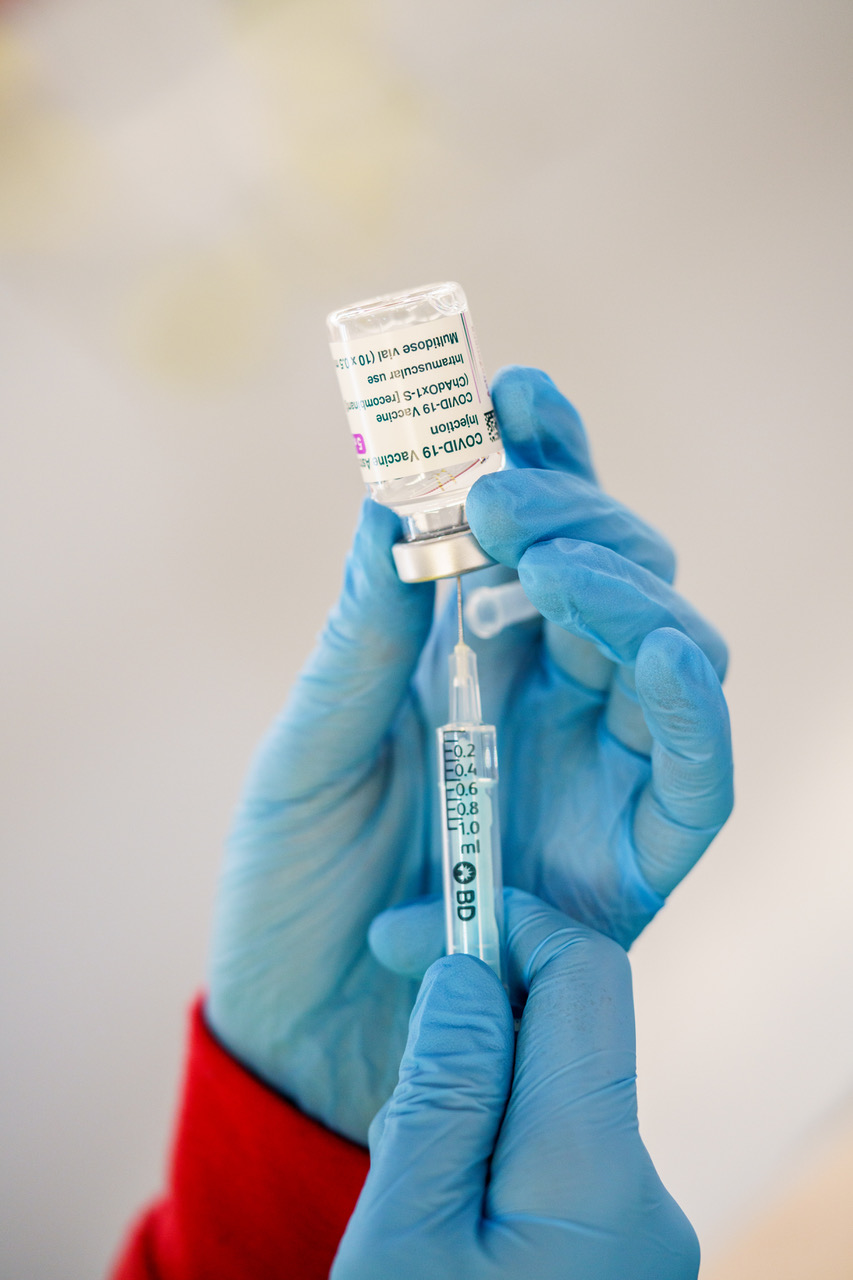
Sprawling parking lots at California State University Los Angeles and Oakland-Alameda Coliseum in “Oaktown” are two locations in California where the state is set to conduct focused vaccine pushes for education workers. The effort is part of Gov. Gavin Newsom’s health equity plan as he prioritizes the reopening of schools.
According to the equity-centered plan, as of March 1, 10% of the state’s vaccine supply is dedicated to K-12 educators and staff. The mobile sites and vaccine drives will focus on “counties and school communities weighted by equity, including the proportion of students from low-income families, English learners, and homeless youth,” state officials said.
“Our top priority is getting students back in the classroom as safely and quickly as possible, and the expanded access to vaccines will build on the momentum and confidence that we can do so with urgency,” Newsom said.
Candidates eligible for the vaccination include teachers, paraprofessionals, bus drivers, childcare workers, and site-based administrators.
State officials have committed to providing 75,000 vaccinations each week at mobile sites set up to administer vaccines for registered school staff statewide. The health equity plan aims to prioritize vaccine access for communities disproportionately impacted by the coronavirus. The equity plan also addresses the ethical issues presented by reports of individuals from outside target communities, including educators at a Los Angeles-based private school, skipping the line to get early vaccinations from medical providers.
Newsom said the state officials are working closely with medical providers, healthcare administrators, and local organizations to speed up vaccine delivery across California.
“The education professionals who nurture and support our children deserve to be and have been prioritized for vaccines, and I am proud to accelerate those efforts in all 58 counties,” Gov. Newsom said.
According to state officials, prioritization is based on occupational health exposure. Eligible candidates will receive single-use codes to schedule vaccine appointments. The health equity plan is an integral addition to Gov. Newsom’s “Safe Schools for All” plan which initiated plans to vaccinate education workers in January.
So far, 35 state counties have vaccinated education workers based on supply since the launch of multiple mobile sites statewide.
Efforts to Counter the Privilege Gap that Leads to Skipping Ahead for Vaccines
According to administration officials with the California Health and Human Services Agency, part of the state’s plans to promote vaccine equity includes partnering with community organizations and understanding demographic data for appropriate vaccine access statewide.”
Dr. Mark Ghaly, secretary of the California Health and Human Services Agency, said the state is working with trusted local organizations for outreach and education campaigns to engage underserved communities.
“We work hard to make sure we don’t have blind spots and we’re paying attention to where we can make improvements,” Ghaly said.
Public health officials are also moving forward with plans to work closely with third-party administrators to provide vaccines in communities disproportionately affected by the coronavirus.
The state can achieve health equity by, “simply doing more for those who’ve been disproportionately impacted. So, they are not overlooked and that is something that we are deeply committed to whether it’s on age or race, or sexual orientation, gender identity,” Ghaly said.
“Administration officials have also put metrics in place to help measure the impact of its outreach and education campaigns in California’s Black and Latino communities. Equity efforts by the state include keeping a “keen eye on the data” and “making adjustments” to address the privilege gap in California’s health care system,” he said.
Affluent people receiving early vaccinations discloses the important equity issue, “we know that we have more work to do in some communities than others,” administration officials said.
State lawmakers have prioritized school staff in efforts to accelerate and support the legislative proposal to reopen schools, “as safely and quickly as possible,” Gov. Newsom said.
The state has launched online tools for accountability and transparency to counter the imbalance of vaccine distribution and also provided routine testing for more than 1,000 schools in California.
Although the legislature’s proposal is a step in the right direction, “it doesn’t go far enough or fast enough,” Gov. Newsom said.
“I look forward to building on the growing momentum to get our schools open and continuing discussions with the Legislature to get our kids back in school as safely and quickly as possible,” Gov. Newsom said.
California Black Media
Gov. Newsom and Gov. DeSantis Go Head-to-Head in Nationally Televised Debate
Conservative Fox News personality Sean Hannity moderated the duel, during which the TV pundit, more than once, injected his opinion, and appeared to be providing subtle assists to DeSantis. As the debate progressed, it was clear that opinions about each topic discussed was representative of the philosophical and political chasm that divides liberal and conservative America, and a preview of campaign mudslinging that is bound to intensify as the 2024 presidential campaign ensues.
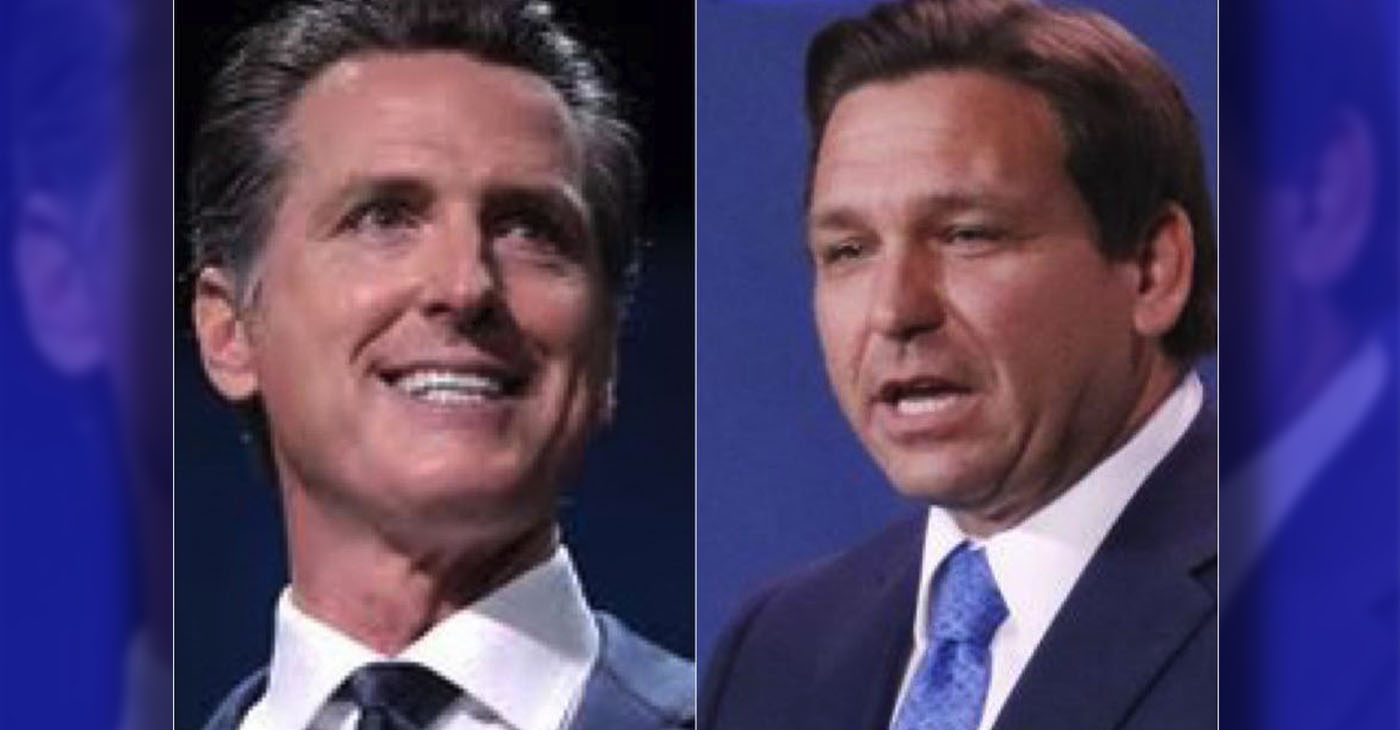
By California Black Media
In an intense, 95-minute-plus televised faceoff between California Gov. Gavin Newsom and Florida Gov. Ron DeSantis on Nov. 30, the men traded jabs and putdowns, defended their respective gubernatorial records, disagreed sharply on how to solve the country’s most pressing problems, and expressed clashing views on the performance of the Biden-Harris administration.
Conservative Fox News personality Sean Hannity moderated the duel, during which the TV pundit, more than once, injected his opinion, and appeared to be providing subtle assists to DeSantis.
As the debate progressed, it was clear that opinions about each topic discussed was representative of the philosophical and political chasm that divides liberal and conservative America, and a preview of campaign mudslinging that is bound to intensify as the 2024 presidential campaign ensues.
“I’ll tell you why I’m here,” Newsom said. “I’m here to tell the truth about the Biden-Harris record and also compare and contrast Ron DeSantis’ record and the Republican Party’s record” with that of California.
DeSantis blasted Newsom’s management of the COVID-19 crisis and criticized Newsom for prevalent crime, homelessness and deteriorating social conditions in California cities.
“You have the freedom to defecate in public in California,” DeSantis said. “You have the freedom to pitch a tent on Sunset Boulevard. You have the freedom to create a homeless encampment under a freeway and even light it on fire. They’re not the freedoms our founding fathers envisioned.”
Newsom took a jab at DeSantis’ presidential candidacy, predicting that the Florida Governor would be endorsing GOP frontrunner Donald Trump soon.
“There’s one thing we have in common,” Newsom said. “Neither of us will be the nominee for our party in 2024.
BayCityNews
FDA Updates Approval of Pfizer Booster Vaccine for Children Under 5
The U.S. Food and Drug Administration updated its approval Tuesday of the Pfizer-BioNTech booster vaccine, making it available to some children under age 5. Before this update, children under 5 were not eligible for COVID-19 booster shots. Instead, they received three doses of the regular vaccine.
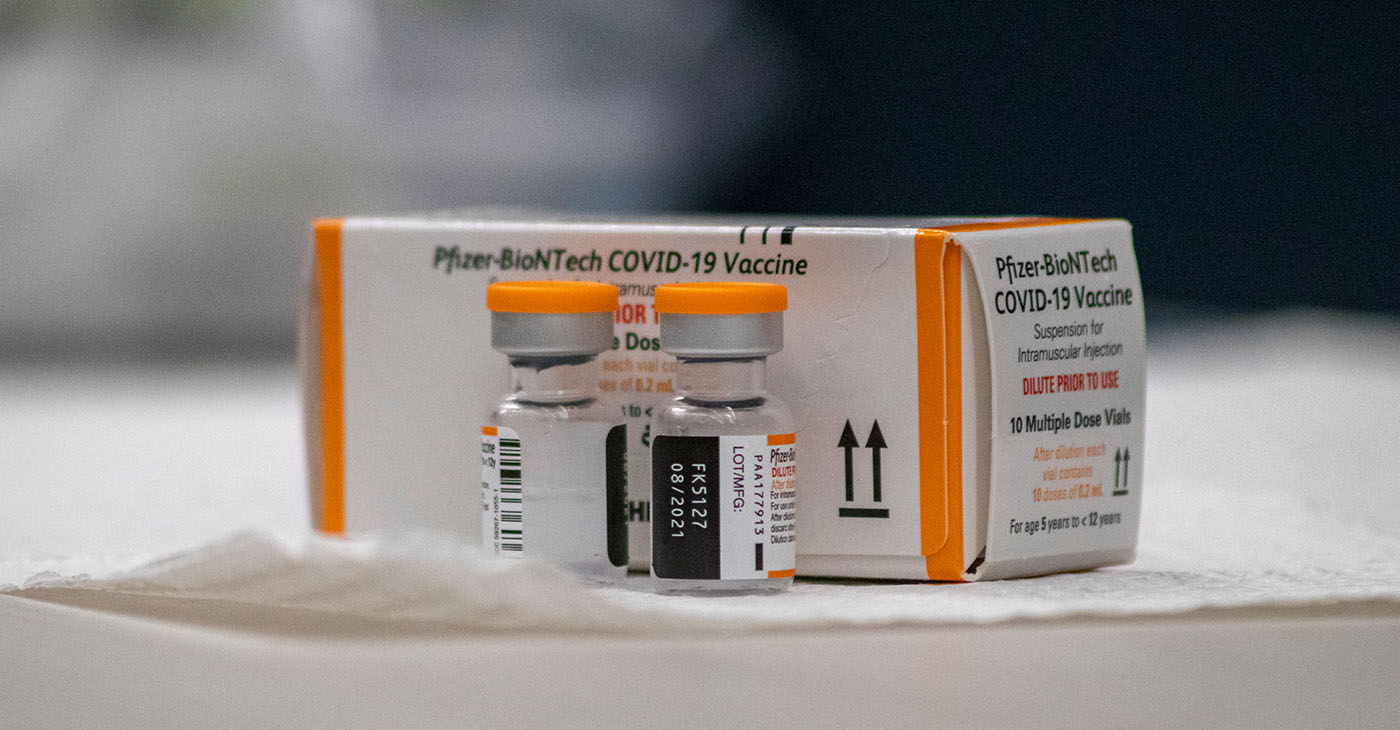
By Eli Walsh
Bay City News
The U.S. Food and Drug Administration updated its approval Tuesday of the Pfizer-BioNTech booster vaccine, making it available to some children under age 5.
Before this update, children under 5 were not eligible for COVID-19 booster shots. Instead, they received three doses of the regular vaccine.
As of December 2022, children age 4 and younger who have not been vaccinated receive the omicron variant-specific booster vaccine as the third dose in their primary vaccine series, following two doses of the original Pfizer vaccine.
However, children in that age range who completed their initial vaccination series before December 2022 only received three doses of the original Pfizer vaccine, and are less protected against more infectious variants of the virus as a result.
FDA officials updated the vaccine’s emergency use authorization Tuesday to allow those children who only received the original Pfizer COVID vaccine to receive one dose of the bivalent booster if it has been at least two months since they completed their initial series.
Other children under age 5 are not eligible for the booster, although everyone age 5 and up is eligible for a booster.
“Currently available data show that vaccination remains the best defense against severe disease, hospitalization and death caused by COVID-19 across all age groups, and we encourage all eligible individuals to make sure that their vaccinations are up to date with a bivalent COVID-19 vaccine,” said Dr. Peter Marks, the director of the FDA’s Center for Biologics Evaluation and Research.
Clinical data has found that both the original Pfizer vaccine and the booster vaccine that targets the omicron subvariants BA.4 and BA.5 are safe for everyone aged 6 months and up and effective at preventing the worst outcomes of COVID infection, including serious illness and death.
COVID vaccines are available at primary care providers, retail pharmacies and some facilities operated by local health departments.
Copyright © 2023 Bay City News, Inc. All rights reserved. Republication, rebroadcast or redistribution without the express written consent of Bay City News, Inc. is prohibited. Bay City News is a 24/7 news service covering the greater Bay Area.
Bay Area
COVID-19 Response Grant Program
The City of Union City will be issuing another round of its COVID-19 Response Grant Program. The program has distributed approximately $620,000 in grant funds and forgivable loans to the community to respond to the impacts of COVID-19 and will distribute another $322,000 through this latest round of funding. The City will utilize federal Community Development Block Grant (CDBG) and CARES Act funds.

The City of Union City will be issuing another round of its COVID-19 Response Grant Program. The program has distributed approximately $620,000 in grant funds and forgivable loans to the community to respond to the impacts of COVID-19 and will distribute another $322,000 through this latest round of funding. The City will utilize federal Community Development Block Grant (CDBG) and CARES Act funds.
Grants are available through the City’s Road to Recovery Small Business Assistance Program and the Residential Rental Assistance Program. The City began accepting applications on March 6, 2023, at 9 a.m. and will begin reviewing applications (up to 50 applications for each grant opportunity) submitted on or before March 30, 2023, at 5 p.m. The program information and the online application are available on the City’s website:
https://www.unioncity.org/548/COVID-19-Response-Grant-Program
The City will be holding two informational/technical assistance meetings to support residents and businesses with their applications and respond to any questions. These meetings will be streamed via Zoom. See below for meeting information and Zoom meeting links.
Tuesday, March 14, 2023: 9 a.m. to 10 a.m.
https://unioncity-org.zoom.us/j/89061570160
Wednesday, March 15, 2023: 12 p.m. to 1 p.m.
-

 Activism4 weeks ago
Activism4 weeks agoOakland Post: Week of March 27 – April 2, 2024
-

 #NNPA BlackPress4 weeks ago
#NNPA BlackPress4 weeks agoCOMMENTARY: D.C. Crime Bill Fails to Address Root Causes of Violence and Incarceration
-

 #NNPA BlackPress4 weeks ago
#NNPA BlackPress4 weeks agoMayor, City Council President React to May 31 Closing of Birmingham-Southern College
-

 #NNPA BlackPress4 weeks ago
#NNPA BlackPress4 weeks agoBeloved Actor and Activist Louis Cameron Gossett Jr. Dies at 87
-

 Community1 week ago
Community1 week agoFinancial Assistance Bill for Descendants of Enslaved Persons to Help Them Purchase, Own, or Maintain a Home
-

 Activism3 weeks ago
Activism3 weeks agoOakland Post: Week of April 3 – 6, 2024
-

 Business1 week ago
Business1 week agoV.P. Kamala Harris: Americans With Criminal Records Will Soon Be Eligible for SBA Loans
-

 Activism2 weeks ago
Activism2 weeks agoOakland Post: Week of April 10 – 16, 2024

